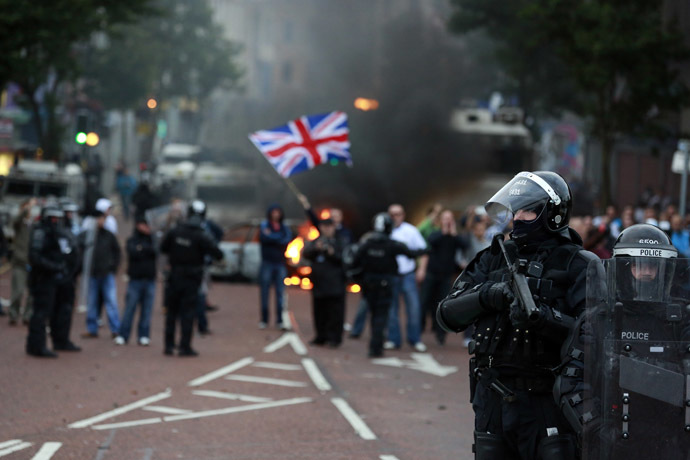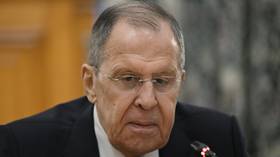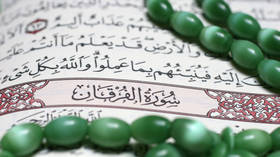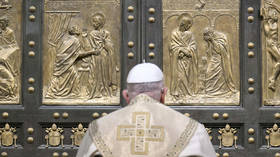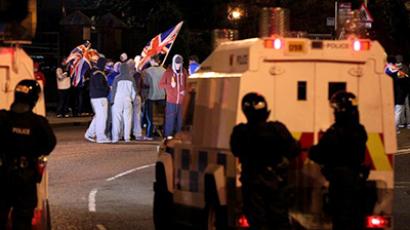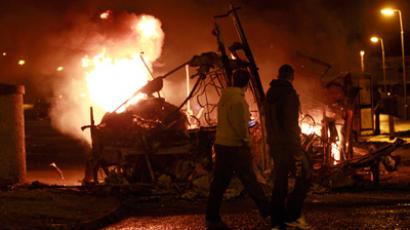‘Mindless anarchy’: N. Ireland police pledge sweeping arrests after 56 officers hurt in Belfast riots
Scores of loyalists attacked riot police protecting a parade of IRA supporters in Belfast, injuring 56 officers and two civilians. Northern Ireland’s police chief said the local prisons will be “bulging” because the “anarchic” scenes were caught on tape.
Northern Ireland Chief Constable Matt Baggott has utterly condemned the Protestant extremists who are responsible for the violent clashes with the police. He urged all politicians to voice their condemnation for the riots, which he described as “mindless anarchy and sheer thuggery.”
Thousands of loyalist extremists on Friday intervened with an
Irish republican hard-liners’ march taking place in the middle of
a busy commercial street in downtown Belfast. According to
statements made by Protestant politicians, the march should never
have been authorized by security officials. Some of the
politicians have called the march “deliberately
provocative.”
But according to Baggott, the loyalists had “no intention of
peaceful protest,” reportedly confronting riot police in the
Royal Avenue area even before the republicans approached.

The violence began as sporadic scuffles between police and Protestants who hurled rocks and fireworks. The conflict quickly intensified, with salvos of rocks and bottles being thrown by the Protestants and the arriving Irish republican marchers.
The street then descended into chaos, as rioters used all
makeshift means to break through the police cordon. Such efforts
included using vehicles to break through the police barrier, as
well as setting garbage dumpsters on fire before wheeling them
into officers.
“You saw the scaffolding poles, the metal gratings from the
drains, the breaking up of paving slabs, people on roof tops
trying to burn houses, people trying to set light to vans and
cars and trying to drive them at police lines,” Baggott said.
Scores of police and two civilians were injured in the chaotic
violence. Four officers were said to be treated in hospital.

Police used batons and water cannon to disperse the crowd. They
also fired 26 non-lethal plastic bullets, according to official
reports.
The organizers of the republican rally, which marked the
anniversary of the British government’s 1971 introduction of
internment without trial in Northern Ireland to halt the growing
activity of the Irish Republican Army (IRA), had to eventually
change the parade’s route, marching away from downtown Belfast.
Smaller direct clashes between the loyalists and republicans were
later reported in other parts of Belfast, as the city center was
left littered with burnt out cars, rubble, and damaged shops.

Seven rioters were arrested Friday night for attacks on police
and the hijacking of cars, the police chief said, assuring that
“many more [arrests] will follow.” He noted that more than
500 rioters - mostly Protestants confronting police in the
streets - had already been charged and convicted for earlier acts
of street violence in December, January, and July.
Meanwhile, the region’s senior politicians have joined Baggott in
condemnation of the Friday violence.
“Whatever people think about the merits of the parade or the
views of the people taking part in the parade, the rule of law
has to be respected,” said Northern Ireland Secretary Theresa
Villiers, calling the riots “shameful.”

The loyalists responded by accusing the police of heavy-handedness, some claiming they were assaulted by police.
Belfast remains divided between pro-British Protestants and
Catholics who mostly favor unification with Ireland, despite a
1998 peace and power-sharing deal that put an end to the worst of
the violence.

The violence comes as both Irish Catholics and British
Protestants mount more divisive parades, using both historical
causes and recent events or legislations as reasons to take to
the streets.
During the 1971 events marked by republicans by their Friday
rally, British soldiers swept into Catholic districts and
arrested more than 340 people as the UK government sought to halt
growing IRA’s influence and violent acts aimed at extinguishing
rule from London.
